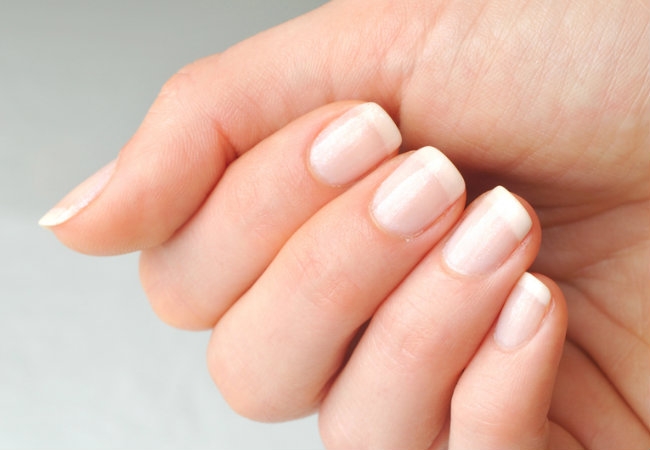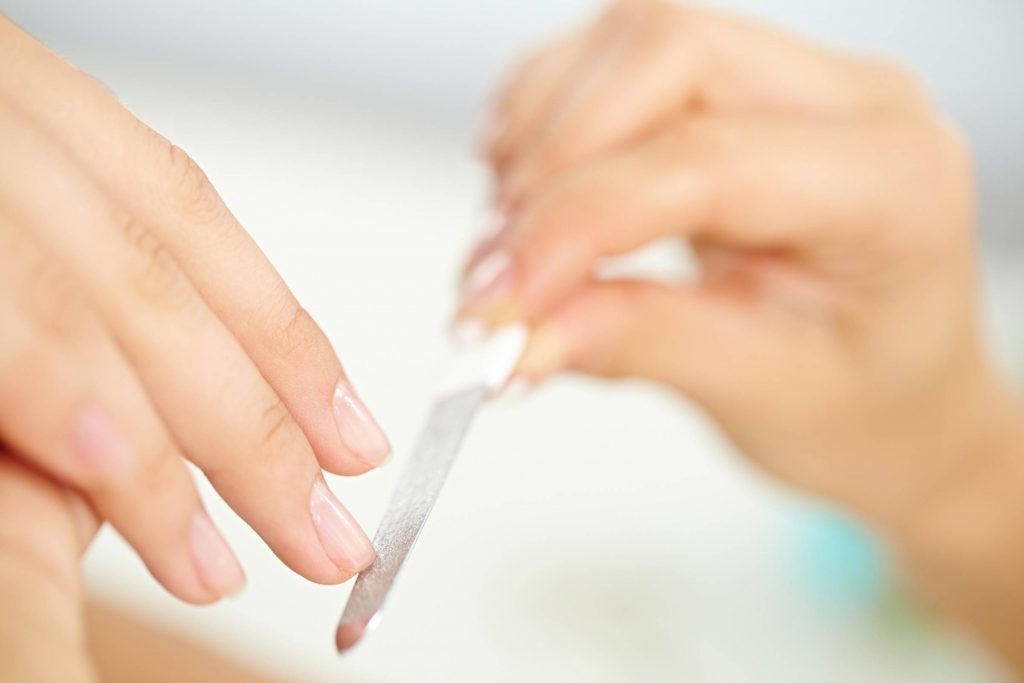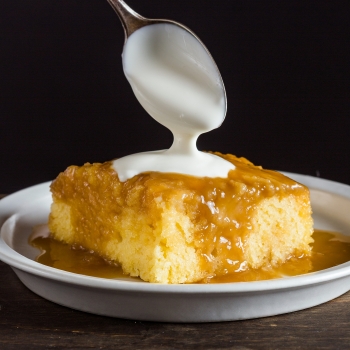How To Cut Your Nails Like A Pro
 |
| Photo: German Manicure Sets |
Here is a step-by-step instruction to cut your nails like a pro:
Part 1: Preparing to Cut
1. Wash your hands and feet. Soak your nails for a few minutes before you cut them – this softens the calcified growths and makes them easier to trim. If your nails are less brittle, you may be less likely to split them.
 |
| Photo: Style Care |
This step is especially important for toenails. Toenails tend to be thicker and tougher than fingernails, especially on your big toe.
2. Choose your cutting tool. You can use nail clippers or manicure scissors. The choice is largely a matter of preference. Consider the pros and cons of each option:
Nail clippers are cheap, simple, and widely available. They cut your nails along a set concave edge – which can be very convenient if the clippers fit your nails, but frustrating if the crescent is too large or too small. Toenail clippers usually feature a heavier bite and a straighter edge to contend with thicker nails and the risk of ingrown toenails.
 |
| Photo: Balding Beards |
Manicure scissors are less common than nail clippers, but some people greatly prefer them. You may need somewhat more finesse to trim your nails with manicure scissors. However, you also have more control over the arc of the cut. As their name suggests, manicure scissors are usually best-suited to hand care. You'll want to use a heavier-duty set of clippers on your feet.
The U.S. Department of Health and Human Services Health Resources and Services Administration says that it is too dangerous to use other sharp cutting tools—such as knives, razor blades, or regular scissors—to trim your nails. The tool may slip and injure the skin surrounding the nail, as cited by WikiHow.
3. Make sure that your clippers are clean. If possible, buy your own set of nail-cutting tools, and keep separate sets for your fingernails and toenails. Wash the implements regularly with a disinfectant for the sake of sanitation. Dish detergent or antibacterial soap will do: just soak the cutting tools for 10 minutes in a bowl of hot, soapy water.
 |
| Photo: WikiHow |
4. Be mindful of where you cut your nails. Make sure that you set up a place for the clippings to go; you may offend other people if you leave chunks of your nails strewn all over the floor. Consider clipping your nails into a trashcan or a compost bin. Hold your fingers and toes directly over the receptacle, and try to track down the clippings that fly astray. Try not to clip your nails in public spaces, and avoid clipping near people that are talking.
You can, indeed, compost fingernails and toenails. They won't add much bulk to the pile, but they are organic matter and they will decompose. Don't try to compost fake nails (acrylics) or excessively-polished nails, as these artificial materials will not degrade.
Part 2: Cutting Nails
1. Trim your nails often, but do not be overzealous. Nails grow about 1/10 of an inch (2.5 mm) every month, meaning that it takes 3-6 to grow a full nail. If you cut your nails frequently—say, once each week or two—you won't need to worry about them growing too long or too wild. If your nails begin to hurt at the edges, you might be developing an ingrown nail; try to trim away the painful growth before it goes too deep, but it would be wiser to seek a health care professional.
2. Cut your fingernails. The goal here is to remove the "free edges" of your nails: the opaque, off-white crescents that grow at the tips of your nails. Cut the nails almost completely straight across, and round them a little at the corners to keep the nails strong. Cutting the nail straight will reduce your chance of developing ingrown nails.
If you are a finger-style guitarist, consider leaving the nails long on your picking hand. Keep at least 1/16th inch (1.5 to 2 mm) of nail on each finger of your picking hand.
3. Make small cuts. Cut your nails using a lot of small cuts; do not try to snip away the entire "free edge" with a single cut. Toenails are naturally oval-shaped, and a single cut tends to flatten out the oval.
4. Cut your toenails. Use the same strategy that you used on your fingernails. Toenails are typically thicker than fingernails, so make sure that you don't use too small a set of clippers. Cut them straight across; cutting back inwards at the edges will increase the likelihood of problems and for diabetics can lead to medical intervention. If you can avoid it, do not use the same set of clippers on your toenails that you used on your fingernails – this way, you'll avoid transmitting bacteria between your feet and your hands.
5. Be careful not to cut too much. It can be tempting to keep on trimming your nails (for the sake of convenience, aesthetic, or compulsion) even after you've removed the "free edge". If you trim too deeply, however, you will expose the sensitive skin beneath the nail, and you may increase your risk of infection. Try to keep the ends of your nails even with the top of your finger – or remove all but a tiny sliver of the opaque "free edge".
Part 3: Filing Nails
 |
| Photo: Reader's Digest |
File your nails to smoothen uneven or rough edges using a nail file or emery board. Always file the nail in the same direction, as filing back and forth can weaken your nails. Filing your nails gives them the desired shape plus smooth surface and prevents them from breaking or splitting, according to Beauty Spark Review.
- File your nails into a round, square, or rounded-square shape.
- Run over each nail with a slightly abrasive buffer to even out the surface of your nails.
Inspect your work. As you cut or file, periodically check your nails to ensure that they're all the same length and shape. Make sure that they're smooth – jagged or pointy nails may prove painful and inconvenient in everyday life. Keep clipping and filing until your nails are even.
 How To Remove Teeth Stains At Home How To Remove Teeth Stains At Home Most people struggle with teeth stains, caused by many factors including poor dental hygiene, smoking cigarettes, and drinking coffee, among others. KnowInsider provides you some ... |
 How to Make a Perfect Poutine to Treat Your Beloved Ones How to Make a Perfect Poutine to Treat Your Beloved Ones Poutine is not only Canada's National Dish but, in the opinion of many of us here at Delish, one of the best comfort foods of ... |
 How to Simply Make a Pudding Chômeur? How to Simply Make a Pudding Chômeur? Quebec has its long list of well-known specialties. But there are a few dishes that are rarely seen outside of the province which deserve greater ... |


























